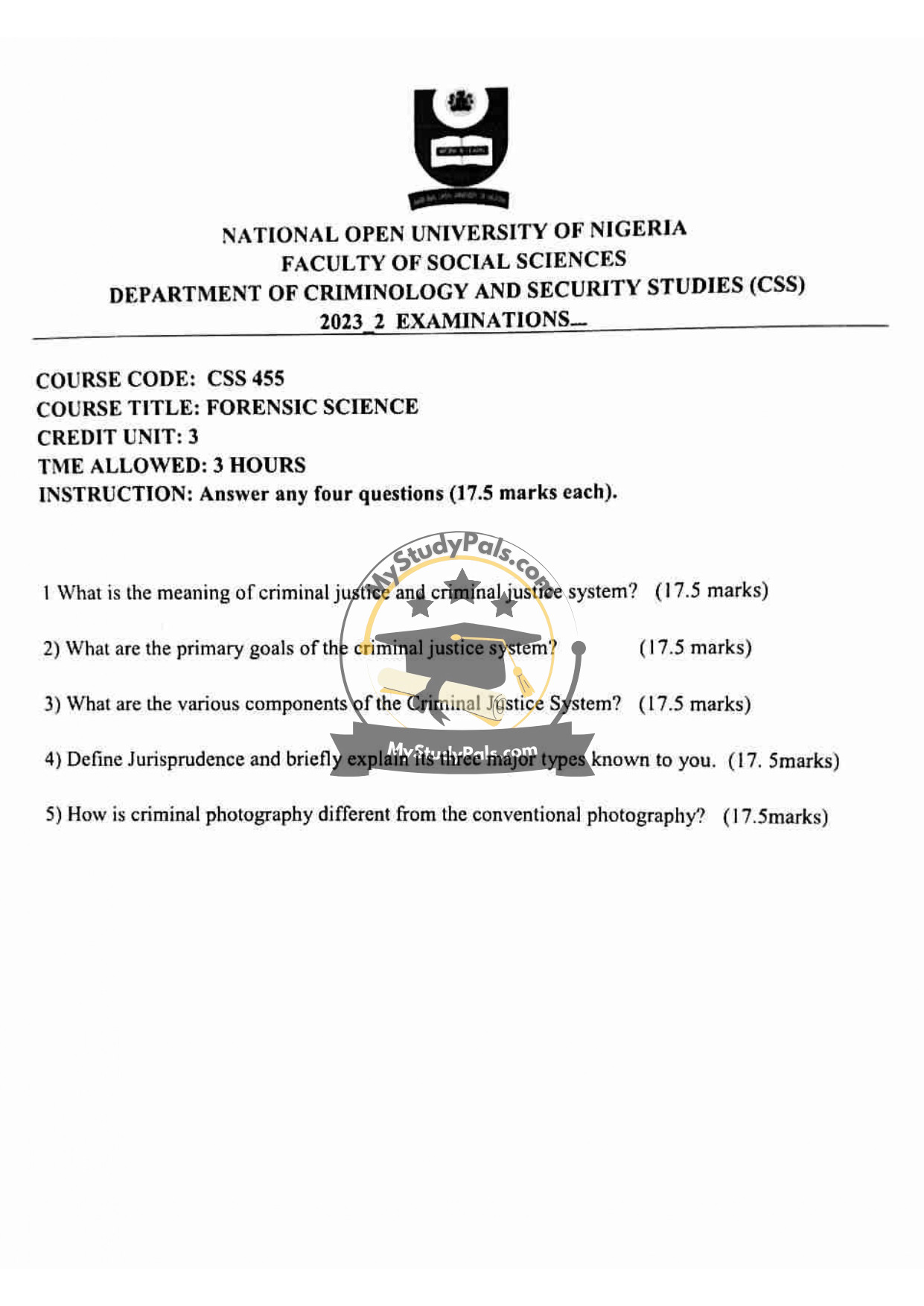ANWSER
Question 1: What is the meaning of criminal justice and criminal justice system?
Answer:
Criminal justice refers to the system of laws, institutions, and procedures established by governments to maintain social order, deter crime, and administer justice by punishing offenders and rehabilitating them. The criminal justice system is the framework through which these goals are achieved, encompassing law enforcement, the judiciary, and corrections. It ensures that individuals accused of crimes are treated fairly while protecting the rights of victims and the public.
—
Question 2: What are the primary goals of the criminal justice system?
Answer:
The primary goals of the criminal justice system include:
1. Deterrence: Preventing future crimes by imposing penalties.
2. Retribution: Punishing offenders proportionate to their crimes.
3. Rehabilitation: Reforming offenders to reintegrate them into society.
4. Incapacitation: Restricting offenders’ freedom to prevent further crimes.
5. Restoration: Repairing harm to victims and communities through restitution or mediation.
—
Question 3: What are the various components of the Criminal Justice System?
Answer:
The criminal justice system consists of three main components:
1. Law Enforcement: Police and investigative agencies responsible for arresting suspects and gathering evidence.
2. The Judiciary: Courts that interpret laws, adjudicate cases, and ensure due process.
3. Corrections: Prisons, probation, and parole systems that enforce sentences and rehabilitate offenders.
—
Question 4: Define Jurisprudence and briefly explain its three major types known to you.
Answer:
Jurisprudence is the theoretical study of law, examining its principles, origins, and societal impact. Three major types include:
1. Natural Law: Assumes universal moral principles underlie legal systems.
2. Legal Positivism: Views law as man-made rules, separate from morality.
3. Legal Realism: Focuses on how laws are applied in practice, considering judicial behavior and social context.
—
Question 5: How is criminal photography different from the conventional photography?
Answer:
Criminal photography, used in forensic investigations, differs from conventional photography in key ways:
1. Purpose: Documents crime scenes/evidence objectively for legal use, unlike artistic or personal photography.
2. Techniques: Employs methods like scale placement, UV/IR imaging, and strict angle/lighting protocols.
3. Standards: Requires unaltered images with chain-of-custody records, whereas conventional photography allows editing.
4. Focus: Captures details like fingerprints, blood spatter, or tool marks, not aesthetics.
—
Let me know if you’d like any refinements!


